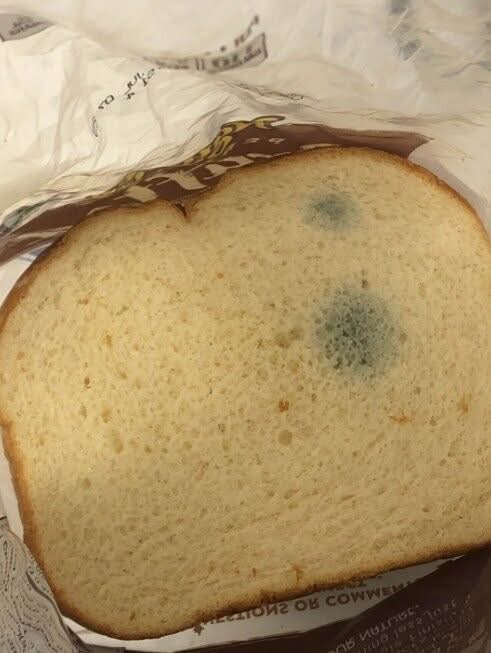
Stale or Moldy? What to Do When Your Bread’s on the Edge We’ve all faced that moment: standing in the kitchen, holding a crusty loaf, asking, “Is this just a bit stale, or is it time to let it go?” Bread can go from fluffy to questionable surprisingly fast. But before you toss it, let’s figure out what’s still usable—and what isn’t. Is Stale Bread Still Safe? Absolutely—if it’s just dry and not growing anything fuzzy.Stale bread simply means it’s lost moisture and the starches have firmed up (a process called starch retrogradation). It’s safe to eat, though…
Stale or Moldy? What to Do When Your Bread’s on the Edge
We’ve all faced that moment: standing in the kitchen, holding a crusty loaf, asking, “Is this just a bit stale, or is it time to let it go?” Bread can go from fluffy to questionable surprisingly fast. But before you toss it, let’s figure out what’s still usable—and what isn’t.
Is Stale Bread Still Safe?
Absolutely—if it’s just dry and not growing anything fuzzy.
Stale bread simply means it’s lost moisture and the starches have firmed up (a process called starch retrogradation). It’s safe to eat, though not ideal for sandwiches. But don’t throw it out yet—it can still shine in other ways.
How to Bring Stale Bread Back to Life:
Warm it up: Wrap it in foil and heat it at 350°F (175°C) for a few minutes to soften it up.
Toast it: Slightly stale bread actually makes great toast—it crisps up beautifully.
Transform it: Stale bread can become your kitchen MVP. Here’s how:
Tasty Ways to Use Stale Bread
USE HOW TO PREPARE
Breadcrumbs Blitz in a food processor, dry it out, and store airtight. Ideal for coatings and fillings.Best restaurants near me
Croutons Cube, toss with oil and spices, then bake until golden. Perfect for topping salads and soups.
French Toast Slightly stale slices hold up better in custard than fresh ones.
Bread Pudding Soaks up custard beautifully—perfect for dessert.
Panzanella This Italian bread salad needs firm, stale bread for the right texture.
Stuffing Slightly dried-out bread provides the best structure and flavor.
Instead of tossing that loaf, turn it into something delicious.
What About Moldy Bread?
Here’s where the rules change. If you spot mold—green, blue, black, or white fuzz—it’s not safe.
And no, cutting off the moldy part isn’t enough. Bread is porous, which means mold can spread below the surface where you can’t see it.
Why It’s Dangerous:
Mold can trigger allergies or breathing issues.
Some molds release mycotoxins, which can lead to food poisoning and other serious health problems.
Best restaurants near me
Bottom line: If there’s mold, the whole loaf needs to go. Don’t take the risk.
How Quickly Does Bread Go Bad?
That depends on a few things:
FACTOR IMPACT
Moisture Fresh, moist bread molds faster than dry, processed types.
Temperature Warm and humid environments speed up spoilage.
Preservatives Store-bought bread lasts longer thanks to added preservatives.
General Shelf Life:
Bakery bread: 2–3 days at room temperature
Packaged bread: Around a week if kept sealed
Refrigerated bread: May last up to 10 days, but will dry out faster
How to Store Bread the Right Way
The goal is to keep it fresh without creating a mold-friendly environment.
For Short-Term (1–3 days):
Use a bread box or paper bag to allow air circulation.
Avoid plastic unless necessary—it traps moisture and speeds up mold growth.
For Long-Term:
Freeze it: Slice first, wrap tightly, and store in a freezer-safe bag. This prevents both molding and drying out.
What About the Fridge?
Refrigerating bread often makes it go stale faster due to the cold. Only do this if your kitchen is particularly hot or humid.
Best Ways to Store Different Types of Bread:
BREAD TYPE BEST STORAGE METHOD
Artisan/Sourdough Paper bag or bread box for a few days; freeze for long-term storage
Store-Bought Loaf Keep in original plastic until opened; freeze if not used soon
Homemade Bread No preservatives = fast spoilage. Freeze what you won’t eat quickly
Final Thoughts
Stale bread? Still useful—especially in the kitchen.
Moldy bread? Not worth the risk—throw it out.
Being bread-savvy can help you cut down on food waste, save money, and discover some truly tasty recipes. Next time you pick up a loaf that seems past its prime, just ask